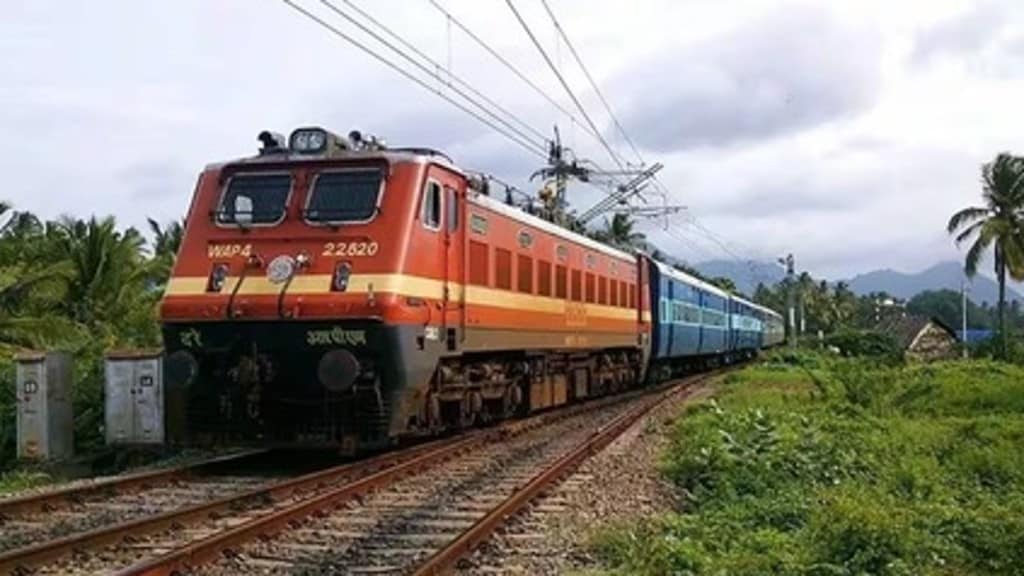By Sudhanshu Mani,
A clutch of train accidents has captured the attention of the media, politicians, and the public alike. The discussion has invariably shifted to the statistics surrounding these accidents. While this has led to the perception that the number of accidents and casualties is on the rise, this has actually decreased over the years.
The reduction in accidents can be credited to efforts such as the elimination of unmanned level crossings, enhanced track maintenance and renewal, gradual improvement in signalling systems, and the induction of Linke-Hofmann-Busch coaches replacing the old ICF type coaches. Although these measures have been works in progress for decades, their pace has accelerated due to increased capital expenditure, which has grown five to six times since 2014.
Examining railway safety requires rising above petty political one-upmanship, as casualties are not merely a matter of statistics. While acknowledging the government’s commitment to investing in infrastructure, the pertinent question is whether Indian Railways (IR) itself has been able to effectively exploit this favourable situation to reduce accidents.
There have been concerns about the skewed distribution of the massive capital expenditure, with investments perceived as inadequate for safety. However, focusing on allocation for safety works won’t give the true picture, as many projects not explicitly categorised under safety have an indirect impact, such as track renewal and signalling upgrades. The crucial issue is whether IR is equipped to execute work commensurate with projects that directly or indirectly enhance safety.
IR indeed seems to be struggling in this area. A prime example is the rollout of Kavach, an indigenous comprehensive signalling system with an important anti-collision component. Some recent accidents could have been avoided and even the triple collision near Balasore could have had a reduced impact had Kavach been installed.
The political Opposition argues that anti-collision devices (ACDs) were installed around 2005 on Northeast Frontier Railway, and that IR has failed to expand their reach. On the other hand, IR claims that Kavach comprehensive signalling system was initiated by the current government. Both are half-truths. The decision to expand ACD into Kavach was made by IR’s Research Design and Standards Organization in 2012. A story of indecision unfolded, with a strong lobby within IR favouring a proven imported system called ETCS Level II.
The government settled the matter three years ago, declaring Kavach as the future of railway signalling after extensive trials over 1,400 km in the Hyderabad area but the project has languished without the addition of a single kilometre, even in the sanctioned Delhi-Howrah and Delhi-Mumbai sections. The oft-cited excuse of a lack of capacity among the allied industry is untenable. If capacity is lacking, it is IR’s responsibility to encourage and nurture the allied industry. More disturbingly, this author has learned that even in the Hyderabad area, Kavach is often disabled. Although Kavach’s safety certification is of the highest order, its reliability needs to be proven through utilisation. If a mishap occurs somewhere in these 1,400 km, IR would be hard-pressed to explain.
If IR decides to install Kavach on half of its busiest routes — approximately 35,000 route kilometres — it would cost around `30,000 crore. Even with a capacity to cover 3,500 km per year, it would take 10 years to complete. The annual outlay would be only `3,000 crore, a small fraction of IR’s capex. However, a focused plan to even cover this appears to be missing. Such slow execution of a project, which the railway minister himself declared as the future, indicates IR’s lack of focus on safety works. If IR is still not confident of the system’s efficacy or speed of implementation, why plan for its adoption across the board? And if indeed that is the case, there is no harm in installing ETCS Level II in some important sections while Kavach matures.
I would like to flag three more critical issues. First, while allocating funds for new lines and multi-tracking is good, maintaining existing tracks is paramount for safety. With the increase in loading density since the late 2000s, the best technology should be adopted for track examination and maintenance, which currently relies on manual and primitive methods. If this requires enhancing the working expenditure budget, so be it.
Second, without delving into the entire staffing pattern and shortages, it is imperative to maintain a no-vacancy regime for critical safety categories, such as loco crew, train managers, station masters, and pointsmen. Carrying vacancies in these categories naturally results in overwork for the existing staff. Despite nearly 20,000 vacancies for loco pilot/assistant loco pilot positions, IR initially notified recruitment for only 5,658 heads. When the issue gained attention, it was revised to 18,799, revealing a casual approach to a serious problem.
Lastly, a desirable new initiative is the judicious use of artificial intelligence (AI) tools. Every IR station has a data logger recording all information about signal aspects and train movements, and every locomotive/train set has an onboard computer capturing data on movement, speed, and braking. This mammoth data sits in silos, used only for post-mortem analyses, and never collated to generate genuine, no-nuisance alerts. As the Kanchenjunga accident demonstrated, despite ambiguity in auto signal failure protocol, there are hundreds of near-misses that go unnoticed without critical scrutiny. Generating these alerts on a day-to-day basis is not easily possible with manual scrutiny, and AI tools can be employed for the attention of the top managers.
Common sense, if given a fancy name and borrowed from the West, becomes a great technique.
(Sudhanshu Mani, Retired general manager, Indian Railways, and leader, Train 18 Vande Bharat project.)
Disclaimer: Views expressed are personal and do not reflect the official position or policy of Financial Express Online. Reproducing this content without permission is prohibited. Please consult your financial advisor before investing.


